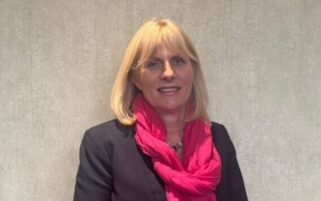Patient access to primary care services is an issue which never goes away, but it has become more heated in recent months as pressure on emergency services has increased
There is no easy answer to the problems the health service experienced this year as waiting times in A&E rose. But battering GPs who are already struggling with rising attendances and more complex presentations isn’t the answer, according to Caroline Kerby, the co-lead of the NHS Alliance’s General Practice Network and a practice manager in London. “The system is just overheating,” she says. “It worries me the pressure that GPs are under.”
Health secretary Jeremy Hunt suggested that access to GP services was part of the problem causing pressure on many A&E departments – something which was attacked as overly simplistic and inaccurate by the chair of the British Medical Association (BMA)’s GP committee Laurence Buckman. Many GPs and practice managers would argue that similar factors may have influenced demand for both GPs and A&E.
One of those was the bumpy start of NHS 111, which was designed to replace NHS Direct but relies largely on non-clinical staff using software which guides their actions. Kerby says this has led to patients being told they need to see their GP within 48 hours for relatively trivial matters. But experience with NHS 111 has been varied around the country. Some practice managers praise their local services but point out that there will always be patients who still want to talk to a clinician and won’t be satisfied with a call handler.
Caroline Kerby points out that multiple access points into the health system mean that if a patient does not like what a GP tells them they can go elsewhere and effectively get a second opinion. And changing social structures can mean people are left without family or other social support which can lead to consultations for minor problems because they don’t know what to do. People now see access to healthcare as a right rather than trying to use the NHS responsibly, she says.
Quick access to a GP or other primary care professionals had been a key target under the last Labour government with primary care trusts (PCTs) regularly reporting it in their board papers, but this was one of the targets effectively dropped by the incoming government. Many practices found that the target distorted clinical care, encouraging them to see the ‘worried well’ rather than those who needed it, and made it more difficult to maintain continuity of care for patients with long-term conditions.
A report by NHS medical director Sir Bruce Keogh suggested the difficulty patients had in accessing GP appointments probably did have some effect on attendances at A&E departments – but only a minority of patients who could not get to see a GP quickly were likely to turn to A&E.
The GP patient survey for January to September last year found only one fifth of patients could get an appointment on the same day and an eighth said they could not book ahead. But there are some glimmers of hope in this. Sir Bruce’s report highlighted the increasing use of telephone consultations – which can take less time than face-to-face ones – and the use of ‘Doctor First’ assessment which has been linked to lower A&E consultation rates.
Good access to out-of-hours primary care is also likely to be important in reducing demand on A&E and general practice. Clinical commissioning groups (CCGs) now have responsibility for commissioning services, but many contracts set up under PCTs did not give GPs much of a voice, says Ms Kerby. CCGs may be in a better position to commission a sensitive service but money will be tight and they will be bound by procurement rules.
But there is little evidence that GPs want a return to the old system of doing their own out-of-hours care – it was rejected by the Conference of Local Medical Committees earlier this year, although GP leader Dr Buckman has suggested they might take a more supervisory role and the Royal College of General Practitioners (RCGP) has suggested different approaches might be needed for some groups – such as the frail elderly – which could involve practices working together. Some of these groups may benefit from better continuity of care, though this need not be from a single GP. And the BMA has called for greater integration of GP services with out of hours, NHS 111, and emergency departments.
Practices on the ground are also trying their own solutions to manage demand, with Saturday morning clinics and longer opening hours having become more common over the last decade, but ultimately only spreading the same number of doctors over a longer period. More innovative measures range from booklets on when babies and children need to see a doctor to outreach sessions on self-management. Longer consultations – being introduced by Ms Kerby – can help GPs cope with the more complex patients.
Organisations such as the Primary Care Foundation can offer help in managing demand: it specialises in analysing data from individual practices to provide a broad picture of where the pressures are. Director Rick Stern says that there is often much that can be done within the practice. This can involve a more consistent approach to dealing with telephones requests to changing access arrangements. He suggests getting this right within the practice will benefit both staff and patients – and potentially the wider healthcare system.
But suggesting doing things differently when primary care and GPs feel under attack can be difficult. “It has never been more important for practice managers to take control of the systems which manage the resources within the practice… to ensure that working lives are better and patients have a better experience of care,” he says. Sandy Gower, practice manager lead for the RCGP’s General Practice Foundation, says getting close to patient groups and listening to their experiences around urgent access is important. But she suggests the system is hard to navigate, especially as patients have to do so when they are feeling poorly. Clarity around where to go in a fragmented system would help, she says.
But in the longer run more GPs will be needed both to manage the work which is being moved out of hospital and to stop people entering the hospital system. The demographics of the GP population will make this challenging; many are coming up to retirement within the next five years and as many as 10,000 could be needed to cope with what Ms Gower describes as the “relentless demand”.
A poll for the RCGP in June found that 85% of GPs who responded felt the system was in crisis and half had concerns about their ability to provide safe care. RCGP chair Clare Gerada pointed to ballooning workloads and more consultations packed into the day. And she warned that when general practice buckles, it affects the whole of secondary and primary care.



